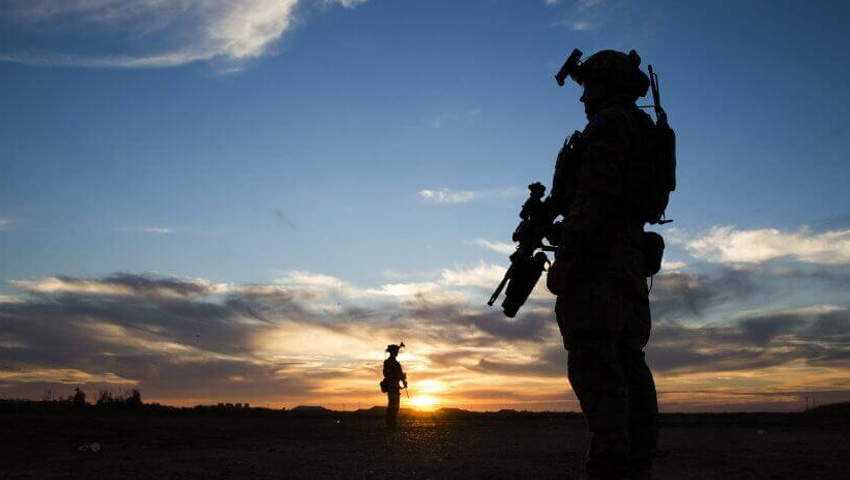Following a string of wins for ISIS-K in recent months, the ruling Taliban government must quickly learn the art of counterinsurgency.
To continue reading the rest of this article, please log in.
Create free account to get unlimited news articles and more!
Over recent months, the Taliban has been the victim of targeted killings, attacks on critical infrastructure and a propaganda campaign from the Islamic State’s local Afghan network. Indeed, analysing the spread of the underground’s propaganda has illustrated that not only is the network growing in support, but also growing in areas of operations.
Peter Mills in the Institute for the Study of War argues that the local insurgents are using two primary vectors to undermine the Taliban government. Firstly, they’re undertaking a series of targeted attacks against Taliban soldiers and officials, not only to increase body bags, but also to undermine the Taliban’s credibility and foment internal Taliban division. Secondly, they’re targeting the country’s Shi’a population to catch the Taliban in the middle of a sectarian conflict.
“The presence of IS-KP propaganda materials indicates that IS-KP is expanding in northern and southern Afghanistan. Bombings at major Shi’a mosques in Kunduz on October 8 and Kandahar on October 15 indicate that IS-KP is attempting to incite sectarian conflict in Afghanistan,” Mills wrote.
So far, ISIS-K’s plan is working, with the insurgents’ field of operations expanding quickly across the country.
“IS-KP currently has attack and support zones within Nangarhar, Kunar, Kabul, and Parwan provinces. Recent attacks in Kunduz and Kandahar indicate that IS-KP is expanding attack zones to those provinces and likely has support zones in or near those provinces,” Mills suggested.
Unsurprisingly, the Taliban isn’t a monolith. The complexities of the group’s organisational structure overlay a remarkably tribal society that is prone to splits and cracks.
As such, counterinsurgents and insurgents always look for exploitable fault lines in a society. Especially, what ethnic, tribal, religious, linguistic or cultural differences overlay one another, that when correctly leveraged can either grow or halt an insurgency. It might just appear as the fault lines within the modern Taliban are starting to come to light.
“Taliban splinter groups appear to be defecting to IS-KP, helping enable its expansion. Fighters previously affiliated with Mullah Manan Niazi’s Taliban splinter faction in Herat Province allegedly defected to IS-KP,” Mills suggests.
“These defections may have prompted a firefight between Taliban forces and IS-KP in Herat City on October 24. Expanding IS-KP support zones and attack zones will likely lead the Taliban to spread out its security forces, opening space for IS-KP to develop havens from which it could launch attacks beyond Afghanistan.”
Over recent months, it’s clear that ISIS-K has followed a tried and tested insurgency handbook.
Barring the most corrupt of regimes, the relationship between polity and populace is one of mutual exchange. Once a government cedes the ability to keep a population safe, happy or healthy – a populace’s relative deprivation grows, the government’s competitive control weakens and a willingness to undertake political violence emerges. Mills illustrates that ISIS-K has directly targeted such levers between polity and populace.
“IS-KP repeatedly destroyed electricity pylons in Parwan Province in June and July 2021, threatening the supply of electricity to Kabul,” Mills wrote.
Indeed, the Taliban’s legitimacy in the eyes of many of their long-term supporters could be damaged if they fail to provide basic services. Mills explains that such a lack of critical civilian infrastructure is likely to be exacerbated by ideology, with the Taliban’s more “moderate” wing an anathema to the group’s younger supporters.
“Younger fighters and mid-level commanders in the Taliban movement are consistently reported to be more radical than the Taliban leadership. The Taliban government showed a certain willingness to compromise on its most hardline values by allowing high school-age girls to go back to school in certain parts of Afghanistan,” Mills wrote.
Such a rise in Sunni fundamentalism has, unsurprisingly, provoked Afghanistan’s Shi’a community. Local Sunni Afghans are now expecting Iranian armed proxy forces to protect local Shi’a communities, leaving the ruling Taliban in the middle of a sectarian conflict – with armed Iranian proxy groups on one side and ISIS-K on the other.
“IS-KP attacks are already encouraging Shi’a community mobilization. A new Hazara militia announced itself as 'The Anonymous Soldiers of Hazaristan' on October 8. This group declared that it saw no difference between the Taliban and IS-KP and would fight both groups,” Mills contested.
Throughout an insurgency, and by extension counterinsurgency, actors rush to exert competitive control over the “neutral majority” of people in a nation – those who simply don’t care for political violence and just want to live their lives. ISIS-K has rushed to exploit fault lines in Afghanistan: tribal allegiances, Sunni-Shi’a tensions, the Taliban’s more extreme youth and economic deprivation to drive many in this “neutral majority” to the extreme fringes.
Without the Taliban carefully selecting steps to address the swathes of grievances among Afghanistan’s population, the ISIS-K insurgency may continue to grow into large scale conflict.
Get involved with the discussion and let us know your thoughts on Australia’s future role and position in the Indo-Pacific region and what you would like to see from Australia's political leaders in terms of partisan and bipartisan agenda setting in the comments section below, or get in touch with

 Login
Login







